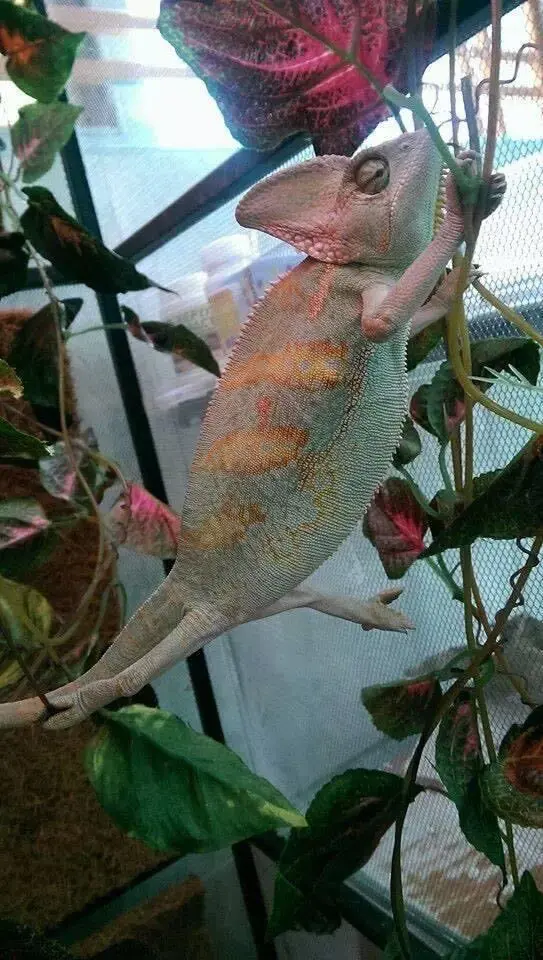Have you just looked at your chameleon and it’s turning white or paler than normal? The good news is that this is completely normal and rather easy to rectify.
White or pale skin can be due to two causes, both of which can be easily remedied to get your pet back to normal quickly and safely.
Why Is My Chameleon Turning White Or Pale
Shedding
Chameleons shed their old skin and renew it as they grow. Younger chameleons will shed their skin more often than adults. Babies and juveniles tend to shed every three to four weeks, while adults only shed every second month.
When they shed, they have flakes of white skin over their entire body. These usually fall off on their own or with the chameleon’s help, using branches to gently scrape the old skin away.

As your chameleon prepares to shed, it will start to turn white or pale in color, it may refuse to eat at this time. The white or pale color is an indication that the skin is loosening and ready to shed.
Shedding usually takes anywhere from a few hours to a day. This should mean that even the white has gone from the body. Older adults may take up to three days.
Anything longer than this means there could be a problem, such as low humidity in the enclosure.
Temperatures too Low
Another common reason why your pet may be looking whiter or paler than normal is that their temperatures are too low.
Low temperatures can cause health problems in your pet, which is why you need to ensure you maintain them at optimum to reduce health problems moving forward.
Related – Veiled chameleon color chart.
What To Do When My Chameleon’s Skin Turns White
Increase Humidity
Depending on the type of chameleon you have, you should be maintaining the humidity levels in the enclosure at between 65% and 85%. Increasing humidity is easily achieved. You can:
- Mist the enclosure once or twice daily using a spray bottle with a fine mist
- Reduce the airflow in the enclosure. You can cover part of the top screen in aluminum foil to help reduce airflow and increase humidity.
- Add live plants. Live plants with eco earth substrate help to boost humidity.
Use a digital hygrometer with remote waterproof probe. This will enable you to monitor your humidity levels with ease.
Maintain Optimum Temperatures
If you find your pet isn’t white or pale due to an upcoming or current shed, then it could be your temperature are too low.
It’s very important to regularly monitor the temperature within the enclosure, ensuring you keep them at optimum. You can do this using a digital thermometer.
Chameleons require an ambient temperature of between 72ºF and 80ºF. They also need a basking area, where they can soak up the UV rays to improve their calcium absorption.
Basking temperatures should range between 85ºF and 95ºF, depending on the chameleon species you own.
Summary
White or pale chameleons are not uncommon. This is usually a sign of an upcoming shed, as the skin starts to pull away and prepare to be removed.
If it is not an upcoming shed or your pet isn’t currently shedding, then ensure to check your temperatures, monitor them regularly to ensure you keep them at optimum.